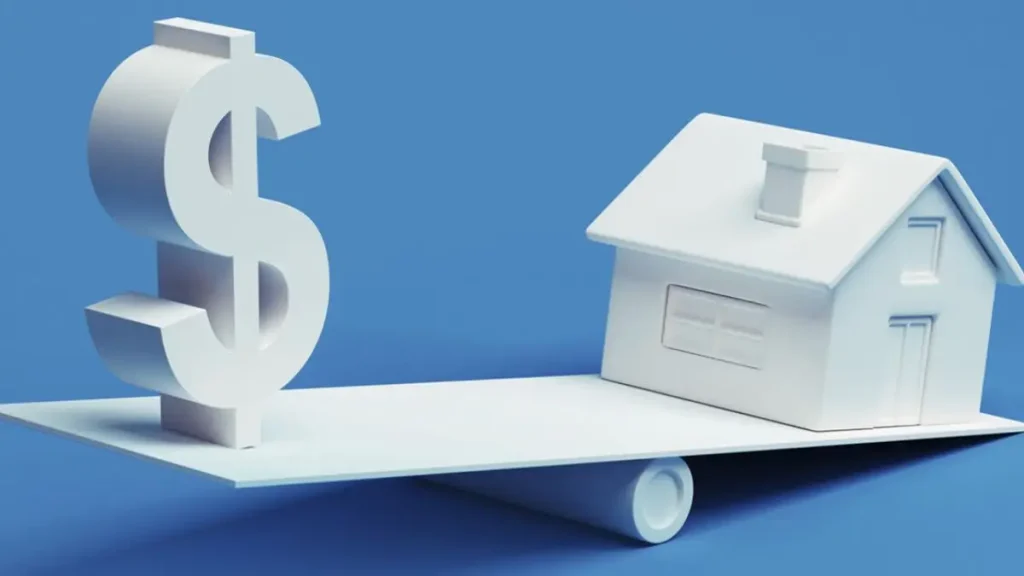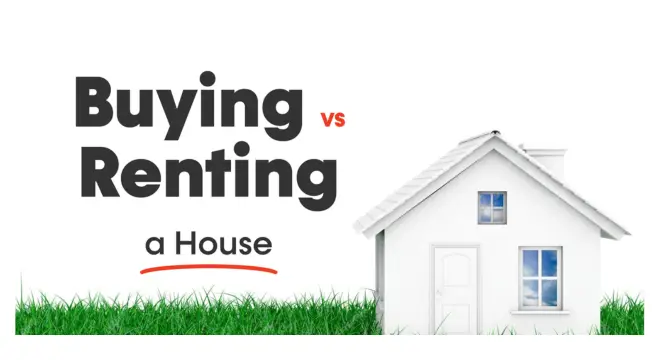Buying a Home in 2025? Here’s What the Monthly Cost of a $431K Home Looks Like at 6.85% Rate
If you’re thinking about buying a home in 2025, you’re probably wondering how mortgage rates will affect your monthly payments. I get it — rates play a huge role in determining how much house you can afford and, ultimately, how much you’ll pay each month.
So, what’s the deal with mortgage rates in 2025?
Right now, the average 30-year fixed mortgage rate is around 6.85%. You might be asking, “Is that good or bad?” While it’s lower than the peak rates we saw in 2022, it’s still higher than what we’ve become accustomed to in the past. So even though home prices might look more reasonable, your monthly mortgage payment could be a bit of a surprise.
If you’re buying a home now, you’re looking at a larger monthly payment. For example, on a $431,000 loan at 6.85%, your payment for just the principal and interest would be around $2,836. But don’t forget — you’ll also have property taxes, homeowners insurance, and possibly private mortgage insurance (PMI) to add to that.
So, what does this mean for you? In short, it means that even though home prices might seem affordable, the higher interest rates could increase your monthly costs. Experts predict rates might go down slightly by 2026, but for now, it’s likely that your payments will stay on the higher side.
As we go further, I’ll help you break down your monthly payments and give you tips on navigating the current mortgage landscape. Let’s dig deeper and make sure you’re making the right call on your home purchase in 2025.
Calculating the Monthly Mortgage Payment for a $431K Home
Now that we’ve got a sense of the mortgage rate, let’s break down how much you’ll actually pay for a $431,000 house at a 6.85% interest rate. It’s easy to get lost in the numbers, so let’s simplify it.
Principal and Interest
For a 30-year fixed mortgage at 6.85%, your monthly payment for just the loan’s principal and interest will be around $2,836. This figure assumes you’re making the minimum down payment.
But, of course, we all know homeownership comes with more costs than just the loan payment. According to Realtor mortgage payment calculator, this is a standard estimate for a loan of this size and interest rate .
Other Monthly Costs
Besides your mortgage, you’ll also have to cover property taxes, homeowners insurance, and possibly private mortgage insurance (PMI). Property taxes vary depending on where you live, but let’s estimate around 1.25% of the home’s value annually. That’s about $5,388 a year or $449 per month for a $431,000 home.
Homeowners insurance typically costs around $1,200 per year, or about $100 a month. If you put less than 20% down, PMI is usually required, and that can add another $150–$300 a month, depending on your loan and down payment. Zillow’s affordability calculator shows how these costs can quickly add up .
So, when you add all of that together, your total estimated monthly payment would range from $3,500 to $4,000. That’s your mortgage, taxes, insurance, and PMI included.
What do you think about these homeownership costs? Are you surprised by the figures, or does your experience match what we’ve shared? Drop your thoughts in the comments below — I’d love to hear from you!
Affordability Considerations in 2025

I know that seeing big numbers like this can feel overwhelming, but it’s crucial to understand your financial situation before jumping into the housing market. Let’s take a closer look at a few key factors that will affect your ability to afford a home.
Debt-to-Income (DTI) Ratio
One of the most important factors lenders look at is your debt-to-income (DTI) ratio. This ratio shows how much of your income goes toward paying off debts. Lenders typically prefer that your total DTI ratio be under 36%.
If you’re above that, you might find it harder to qualify for a mortgage or get a lower rate. So, it’s essential to keep your debt load manageable.
Down Payment
The down payment is another big piece of the puzzle. The larger your down payment, the less you’ll need to borrow, and the lower your monthly payments will be. Ideally, you’ll want to aim for a 20% down payment to avoid paying PMI, which can save you hundreds of dollars a month.
For example, if you’re buying that $431,000 home, a 20% down payment would be $86,200. That’s a substantial amount, but it will help you get a better mortgage deal and lower payments.
Credit Score
Your credit score plays a huge role in your mortgage rate. The better your credit score, the more likely you are to qualify for a lower rate, which can save you a lot of money over the long term. A score of 740 or higher is typically required to get the best rates, but it’s still possible to get a mortgage with a lower score — just expect to pay a higher rate.
Understanding these factors helps you prepare for what’s coming. You need to know exactly how much you can afford, so you’re not caught off guard when you start looking at homes. Take control of your financial situation now to make sure you’re ready when the right home comes along.
Have you ever wondered how other homebuyers are navigating the rising mortgage rates and costs in 2025? If you’re interested in learning how people like you are managing their homebuying journey, there are active discussions happening on platforms like WhatsApp, Twitter, and Facebook. You can connect with others to share insights, experiences, and strategies for making the most out of your home purchase.
Regional Variations in Mortgage Costs
As you’re figuring out what you can afford, it’s important to understand that mortgage rates and homeownership costs vary depending on where you live. Let’s talk about how the market differs by region.
U.S. Market
In the U.S., mortgage costs can vary significantly by state or even city. For example, if you’re looking at high-cost areas like California or New York, your monthly payments might be higher due to both elevated home prices and property taxes.
On the other hand, areas with lower home prices like parts of the Midwest or South might give you more purchasing power for the same monthly payment.
If you live in a higher-cost area, you’ll need to factor that into your budget and consider whether you’re willing to adjust your expectations.
Indian Market
If you’re in India, the market is slightly different, but the same rules apply. Following a recent rate cut by the RBI, home loan EMIs are expected to decrease, making homeownership more accessible.
As a result, there’s an uptick in demand for homes, especially in affordable segments. However, just like in the U.S., home prices can vary widely across regions. Bigger cities like Mumbai or Delhi tend to have higher prices and taxes, which directly affect your mortgage.
If you’re in India, understanding the local market conditions will be crucial in calculating your exact costs. It’s worth researching the rates in your specific area to know what kind of home you can realistically afford.
Keep in mind that in 2025, factors like your down payment and credit score aren’t the only things that affect your budget. Changes in tariffs may also increase your home insurance costs, further impacting your affordability. Find out more about this in our article on home insurance tariff hikes in 2025.
Expert Tips for Homebuyers in 2025

Buying a home in 2025 isn’t the same as it was a few years ago. With higher interest rates and shifting market conditions, you need to be strategic. Let me give you some expert advice to help you make smarter choices:
- Shop Around for the Best Rates
- Don’t settle for the first mortgage rate you’re offered.
- Take time to compare rates from various lenders, credit unions, and online mortgage platforms.
- Even a small difference in interest rates (e.g., 6.85% vs. 6.5%) can save you thousands of dollars over the course of 30 years.
- Consider Loan Term Length
- Opting for a 15-year mortgage instead of a 30-year one will increase your monthly payments but reduce the total interest paid over the loan’s life.
- If you’re financially comfortable with higher payments, the 15-year option can save you a significant amount of money.
- However, if cash flow is tighter, a 30-year loan might be a better fit, giving you lower payments and more breathing room.
- Lock in Your Rate
- If you’re worried about rising interest rates, consider locking in your rate.
- Rate locks are usually available for 30, 45, or 60 days and prevent the rate from rising during that period.
- While rate locks can come with a fee, they offer peace of mind and can save you money if rates continue to rise.
Do you think locking in your rate is worth it in today’s market? Share your thoughts on this strategy, or let me know if you’ve already locked in a rate for your home purchase. Let’s start a conversation in the comments below!
Conclusion
Alright, you’ve got the information, but now it’s time to act. Buying a home in 2025 requires understanding not only the mortgage rate but also how your personal finances fit into the bigger picture. This is your financial future on the line, so take the time to review your options, do the math, and plan accordingly.
The most important takeaway here is: don’t rush into anything. This is a big decision, and the more informed you are, the better prepared you’ll be to handle whatever comes your way in the homebuying process.
Are you ready to start looking for your new home? Or do you need to adjust your budget first? Either way, knowing exactly how much you can afford is the first step toward securing your dream home.
If you found this article helpful and want to stay updated on the latest tips for homebuyers, feel free to follow me for more insights and advice. You’ll find useful tips on navigating the housing market and much more!
Disclaimer: The information provided in this article is for general informational purposes only and should not be considered as financial or legal advice. Mortgage rates, fees, and terms may vary based on your personal circumstances and market conditions. Always consult with a licensed financial advisor or mortgage professional before making any decisions.


